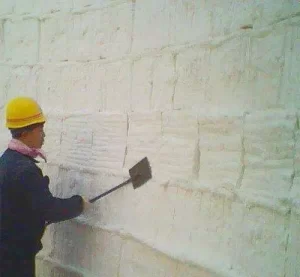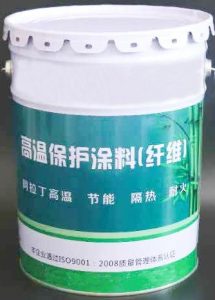How to Repair Shrinkage or Detachment of Ceramic Fiber Lining in a Furnace?
Table of Contents
Ceramic fiber linings are favored for most kilns due to their lightweight, refractory, and easy-to-install nature. Today, Anchor Company will introduce the methods for repairing ceramic fiber linings.
PART.01 Repairing Shrinkage Seams
When there are gaps wider than 5mm in the ceramic fiber lining, a 1:1 repair should be carried out. Use the same grade of ceramic fiber blanket for filling. The ceramic fiber blanket should be stuffed into the gap as much as possible until it can no longer be squeezed. Ensure that the gap is tightly filled and compressed. Do not just fill the surface, as it will detach shortly after operation.

PART.02 Repairing Detached Ceramic Fiber Modules

01 Repairing Standard Ceramic Fiber Module Detachment
After the standard ceramic fiber module is damaged or detached, use a ceramic fiber module of the same size for repair. Re-weld the anchoring pin at the original position, lay a ceramic fiber blanket as a backing, and install the ceramic fiber module. Compress the ceramic fiber blanket between two rows of modules in the non-folded compression direction to compensate for shrinkage. For larger gaps between the replaced module area and the surrounding area where modules have not been replaced, fill with ceramic fiber blanket.
02 Repairing Detached Irregular Ceramic Fiber Modules
After irregular ceramic fiber modules (such as corner modules, curved modules, etc.) are damaged or detached, they can be repaired by layering ceramic fiber blankets. This involves welding long anchoring pins, then layering ceramic fiber blankets one by one. The thickness of the re-layered material should be consistent with the original lining, and finally, secure the surface in place.

The reason for using the method of layering ceramic fiber blankets for repair is twofold. On one hand, after irregular ceramic fiber modules are damaged or detached, there are generally no corresponding irregular modules available for replacement. On the other hand, after prolonged exposure to high temperatures, the remaining irregular modules may experience shrinkage and loss of elasticity. If the same irregular modules are used for repair according to the original structure, it may result in insufficient compression at the contact point with the replaced irregular modules, becoming a potential hazard.
After high-temperature operation, rapid shrinkage of the ceramic fiber modules can lead to gaps, which can cause damage or detachment of the furnace lining. Using layered ceramic fiber blanket structure allows the blankets to be cut larger than the damaged or detached area, leaving room for compression at the contact point with the undetached irregular modules during laying process. This solves the forementioned problem.
Anchor Company's Ceramic Fiber Tips
Depending on usage, you can apply Anchor Company’s Ceramic Fiber Protective Coating on the module surface to protect the fiber surface, resist heat erosion, and extend its lifespan.
Once ceramic fiber linings experience shrinkage seams or damage and detachment after prolonged exposure to high temperatures, timely repair is essential. This helps extend the overall lifespan of the lining and ensures the safe operation of production.


